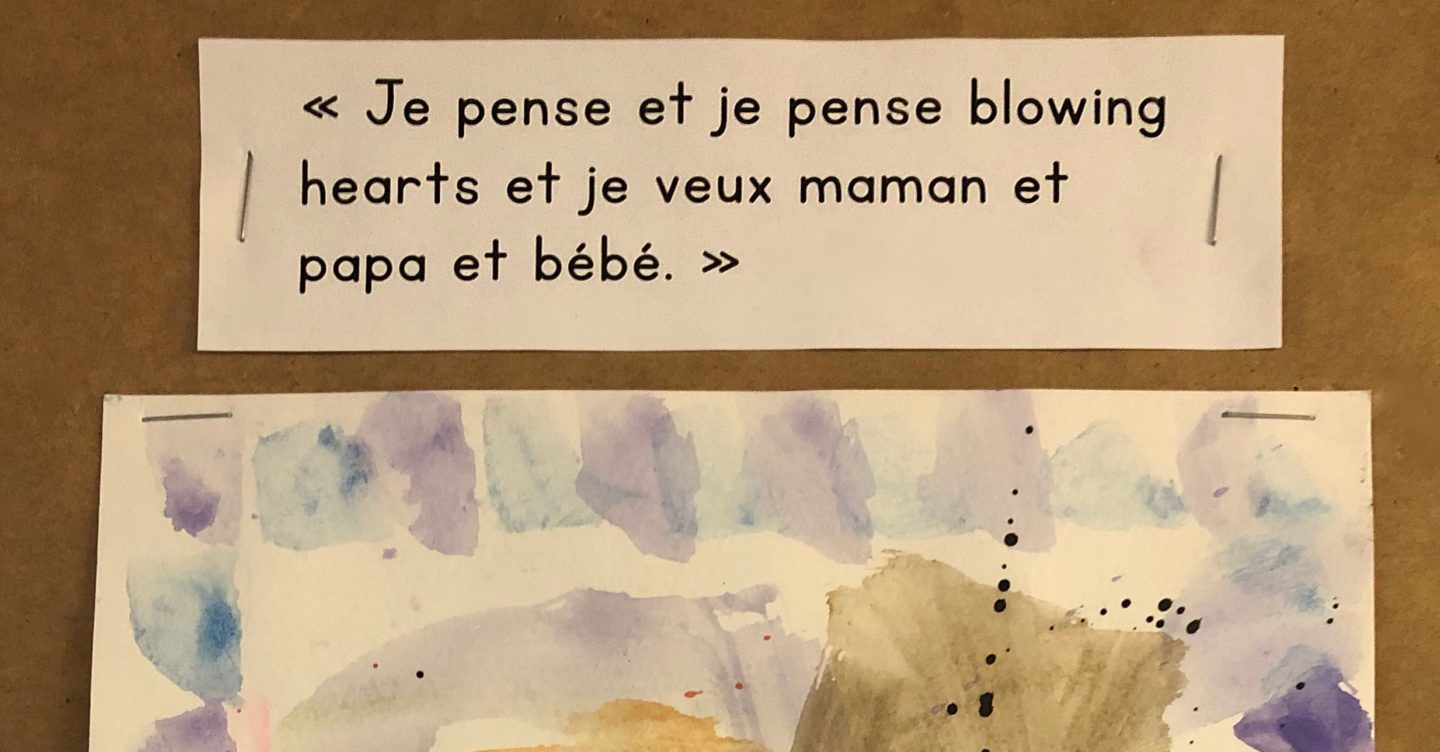
Translanguaging Towards the Target Language
When I think about developing a culture of thinking in my classroom, I am not only considering thinking in the French language… So many other types of communication and languages are rich in my classroom, and I see many possibilities for deep thinking. Reading Ritchhart’s work about thinking has inspired me to consider how I can best bring some of these thinking routines into my language classroom. The big question is, what does visible thinking look like in the language classroom? Before I can even get to step one, I felt the need to examine my values around translation and tanslanguaging.
In French immersion, teachers feel the impulse to translate everything a learner says into the target language. We can’t skip the journey and jump right to the destination.
As my young learners build their language base in French, they begin to express themselves by adding more French words to their speech. This translanguaging comes quite naturally to them. Young learners are often excited to try saying new words in French; many families have prepped their child with the idea that they are coming to school to learn French. What flows naturally from the emergent language learner’s lips is plutôt parler français comme une vache espagnole. For this reason, oftentimes in French immersion, teachers feel the impulse to translate everything a learner says into the target language. We can’t skip the journey and jump right to the destination. I have spent a lot of time thinking about when translation is appropriate and how to balance translation towards the target language with translanguaging and free thinking.
I still need to do more thinking about this myself. Here is where I am at with it right now. If a word has been introduced in the target language, and I feel I have offered ample opportunities for my learner to practice using this word (repetition), then I will prompt the learner by gesturing or with « en français, s’il te plaît. » If I feel I haven’t offered sufficient repetition with a word, but it has been previously introduced, then I will ask «comment est-ce qu’on dit ___ en français? » to any learner nearby (including the learner whose idea it originally was). Most often, one of my learners will be able to fill in the missing word. If the learner is becoming quite fluent, then I will encourage them to ask « comment est-ce que je dis ___ en français? » in order to encourage them to seek the words they don’t yet know. I reserve these types of interactional feedback for oral interactions.
If translanguaging is a part of a child’s “finished” written work, or their oral description of a representation of thinking (such as drawing or painting), I don’t correct it. When I transcribe to document thinking, I work like a stenographer not an editor. I want to capture the language expertise as it was in that moment. In these moments I am not necessarily seeking to extend the language thinking, but rather to observe it.
When it comes to language expertise, I celebrate a growth mindset in my classroom. I encourage my learners to make strong efforts to speak in French. Truth be told, it literally hurts my ears when I hear too much English. There is something so jarring about it. I think it is because it runs counter to the culture of thinking and learning I am working to create together with my learners. More often than not, my learners amaze and inspire me with their efforts and their progress. They are so capable!
